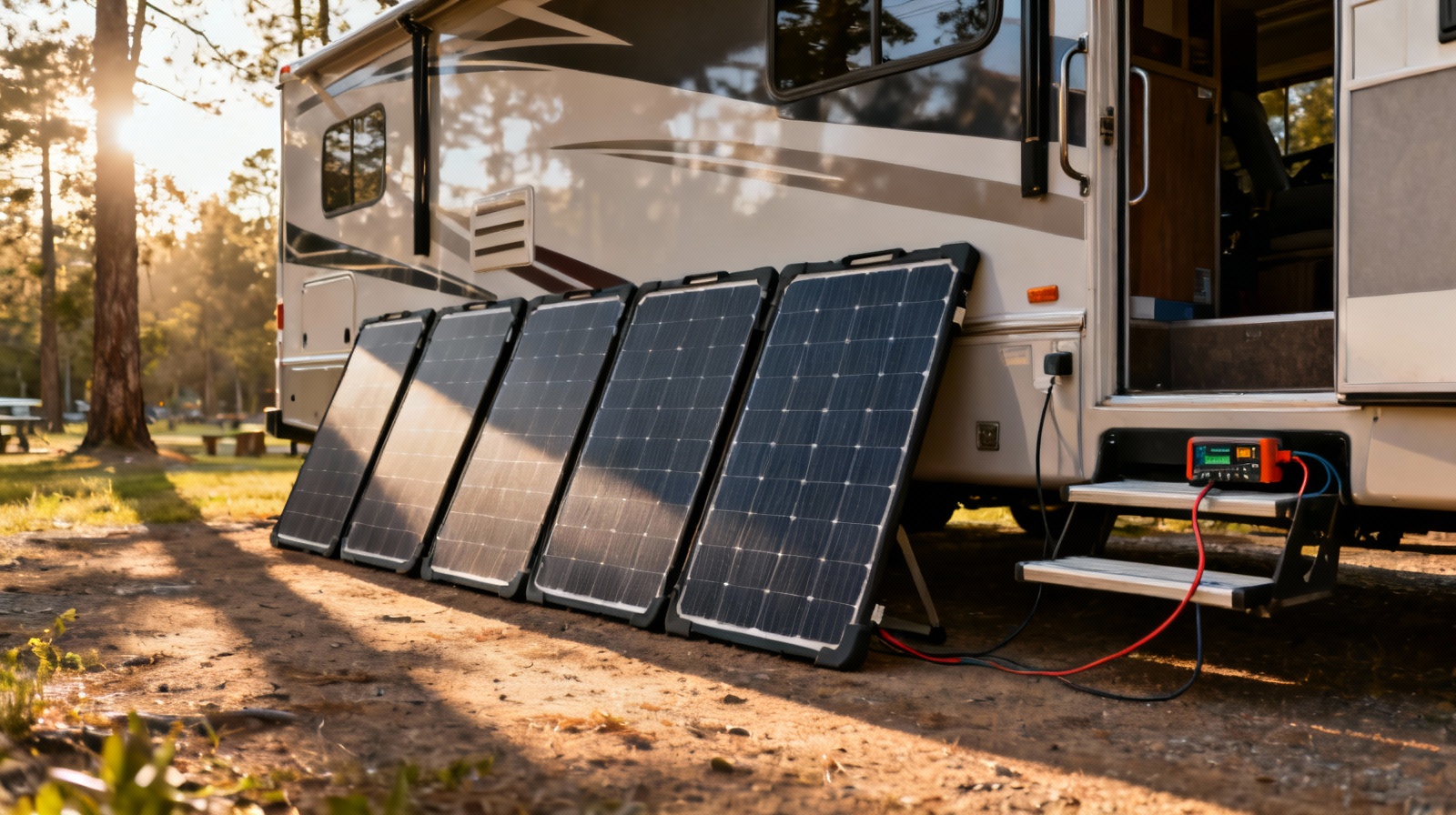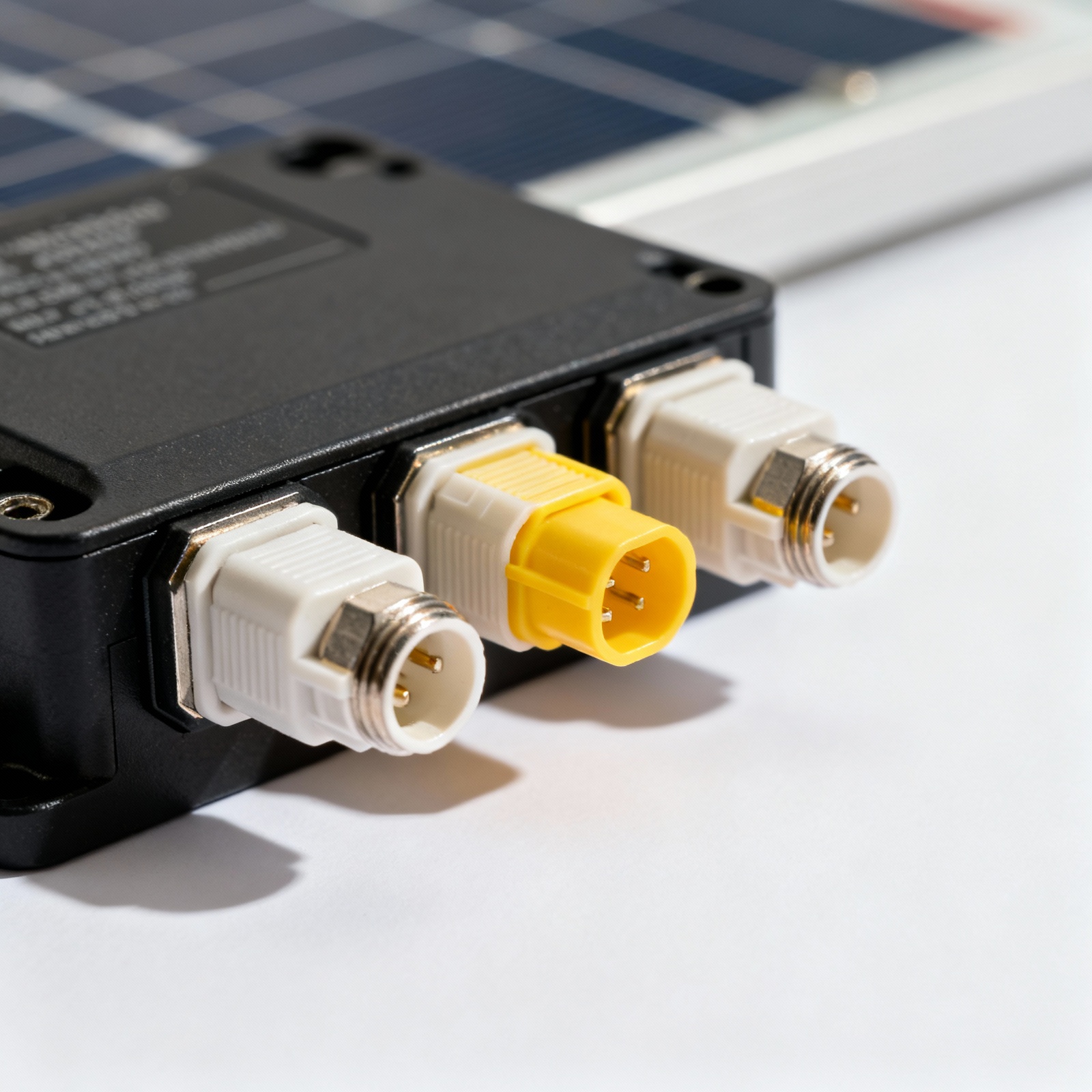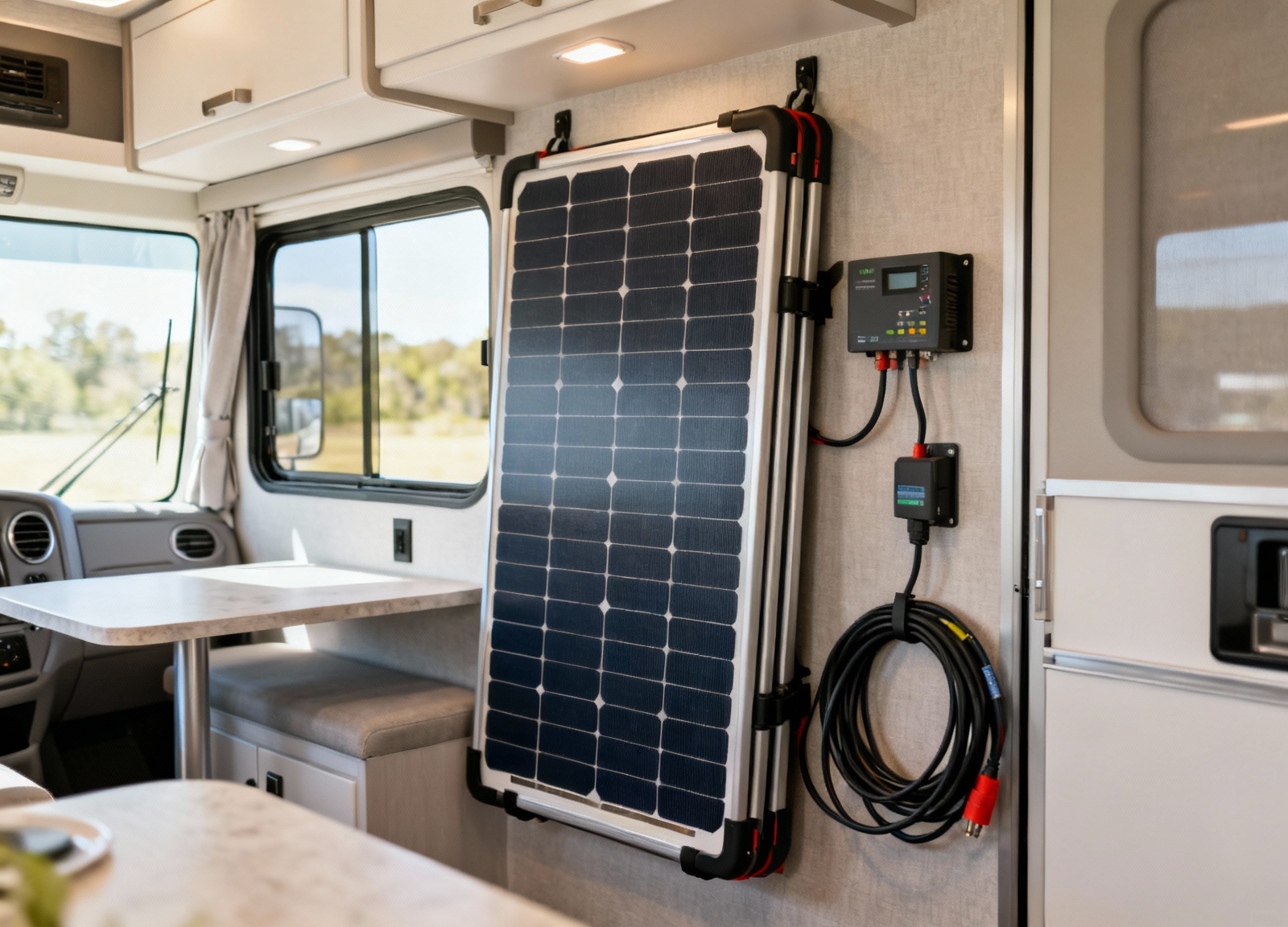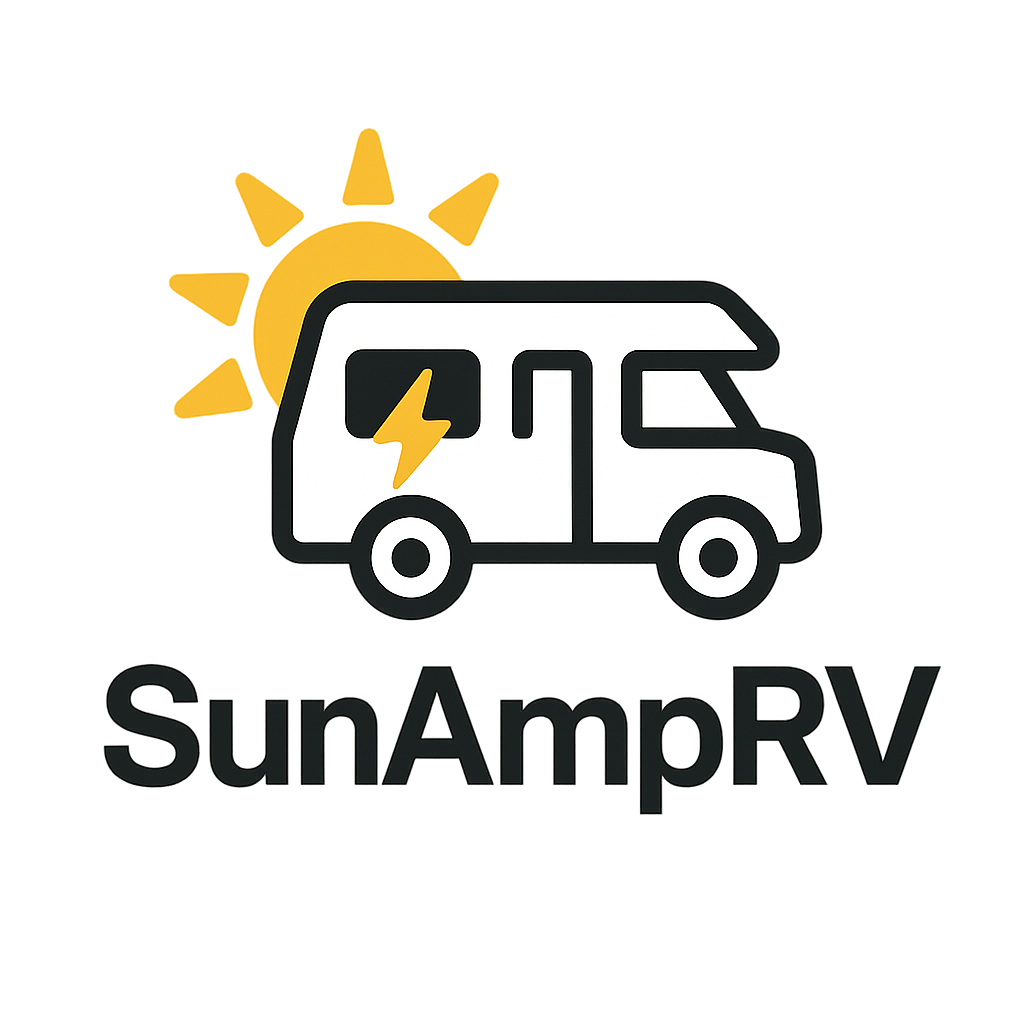
Best by Use-Case
Extended Boondocking (7+ Days Off-Grid)
The Bluetti PV420 delivers consistent 340-380W real-world output through its four 105W panels, providing enough daily generation to run a 12V compressor fridge (60-80Ah/day), LED lighting (10-15Ah), water pump (5-10Ah), and device charging while maintaining battery health above 50% SOC. Its 23.4% efficiency rating combined with the exceptional 0.27%/°C temperature coefficient means you’ll maintain 85% rated output even at 40°C ambient temperatures common in southwestern deserts. View on Amazon
- Pros: Highest single-panel wattage available; integrated kickstand with 40-80° adjustability; IP65 weatherproofing handles unexpected rain
- Cons: 30.7 lbs weight requires two-person setup; $999 price point; requires 8AWG extension cables for runs over 25 feet
Key Specs: 420W rated / 340-380W typical output | 23.4% efficiency | 0.27%/°C temp coefficient | 30.7 lbs | 35.6″ × 24.1″ × 1″ folded
Weekend Warriors (2-3 Day Trips)
The Jackery SolarSaga 200W perfectly balances portability with power generation for typical weekend camping needs, delivering 160-180W real-world output to recharge a 100Ah battery from 50% to 90% in 3-4 hours of peak sun. Its industry-leading 24.3% efficiency extracts maximum power from limited sunlight windows between trees at established campgrounds, while the integrated USB-C and USB-A ports let you charge devices directly without inverter losses. View on Amazon
- Pros: Highest efficiency rating in class; magnetic alignment system speeds setup; compatible with all major power station brands via MC4
- Cons: Premium pricing at $699; no integrated kickstand (separate purchase); 18 lbs requires careful handling
Key Specs: 200W rated / 160-180W typical | 24.3% efficiency | 0.29%/°C temp coefficient | 18 lbs | 23.5″ × 21.5″ × 1.5″ folded
Budget-Conscious Campers
The Renogy 200W Portable Solar Panel delivers 80% of premium panel performance at 50% of the cost, generating 140-160W real-world output sufficient for maintaining house batteries during weekend trips with moderate loads.
While its 20% efficiency trails the leaders, the durable aluminum frame and tempered glass construction provide 25-year expected lifespan that amortizes the $299 investment to under $12 per year. View on Amazon
- Pros: Unbeatable price-to-watt ratio; includes 20A PWM controller; proven 5-year warranty from established manufacturer
- Cons: Lower efficiency requires longer charging times; 26 lbs weight; basic tilt-leg design limits angle adjustment
Key Specs: 200W rated / 140-160W typical | 20% efficiency | 0.35%/°C temp coefficient | 26 lbs | 26.4″ × 21.6″ × 2.4″ folded
Ultralight Van Life
The BougeRV Yuma 200W CIGS flexible panel weighs just 4.6 lbs while delivering 140-160W through its thin-film copper indium gallium selenide cells that handle partial shading 40% better than crystalline panels. The 360° flexibility allows temporary mounting on curved van roofs using included adhesive pads, then rolls to 24″ diameter for storage when driving between locations or during security concerns at urban camping spots.
- Pros: 82% weight reduction versus rigid panels; superior partial shade tolerance; can walk on surface without damage
- Cons: 17% efficiency requires more surface area; 10-year lifespan versus 25 for rigid; vulnerable to abrasion during storage
Key Specs: 200W rated / 140-160W typical | 17% CIGS efficiency | 0.31%/°C temp coefficient | 4.6 lbs | 24″ diameter rolled
Winter/Shoulder Season Camping
The Renogy E.FLEX 220W maximizes low-angle winter sun capture through its 23.5% monocrystalline efficiency and exceptional 0.25%/°C temperature coefficient that actually improves output in cold conditions.
The four-panel design allows creative positioning around obstacles, while the ETFE coating sheds snow accumulation better than glass surfaces. Real-world winter testing shows 110-130W output on clear December days at 35° latitude. View on Amazon
- Pros: Best cold-weather temperature coefficient; ETFE lamination prevents micro-cracking; includes 5-in-1 MC4 adapter set
- Cons: $549 price point; complex four-panel setup; reduced output below 20°F despite good coefficient
Key Specs: 220W rated / 110-130W winter output | 23.5% efficiency | 0.25%/°C temp coefficient | 19.8 lbs | 23.6″ × 21.2″ × 2″ folded
Full-Time RV Families
The Goal Zero Boulder 200 Briefcase combines dual 100W panels with an integrated 20A PWM charge controller and battery clamps for plug-and-play operation that even kids can help deploy. The military-grade aluminum frame withstands daily setup/teardown abuse, while the tempered glass surface handles hail impacts up to 1″ diameter.
Generating 150-170W typical output, two briefcases in parallel provide enough power for residential refrigerators, multiple device charging, and entertainment systems.
- Pros: Most durable construction available; integrated controller simplifies wiring; proven 25-year panel warranty
- Cons: 42 lbs requires two-person handling; $600 premium pricing; fixed 15° kickstand limits optimization
Key Specs: 200W rated / 150-170W typical | 19% efficiency | 0.34%/°C temp coefficient | 42 lbs | 26.75″ × 21.75″ × 3.5″ folded
Quick Comparison

| Model | Type | Key Specs | Best for |
|---|---|---|---|
| Bluetti PV420 | Rigid Foldable | 420W, 23.4% eff, 30.7 lbs | Extended boondocking |
| Jackery SolarSaga 200W | Rigid Foldable | 200W, 24.3% eff, 18 lbs | Weekend camping |
| Renogy 200W Portable | Rigid Suitcase | 200W, 20% eff, 26 lbs | Budget-conscious |
| BougeRV Yuma 200W | Flexible CIGS | 200W, 17% eff, 4.6 lbs | Van life/ultralight |
| Renogy E.FLEX 220W | Rigid Foldable | 220W, 23.5% eff, 19.8 lbs | Winter camping |
| Goal Zero Boulder 200 | Rigid Briefcase | 200W, 19% eff, 42 lbs | Full-time families |
Buyer’s Notes
Real-world solar output typically reaches 75-85% of rated capacity in ideal conditions due to angle losses, temperature derating, and wiring resistance.
The 13.4% output loss per 30° angle deviation from perpendicular means morning and evening generation drops significantly without manual repositioning. Plan for 4-5 peak sun hours daily in summer, 2-3 hours in winter, with overcast days producing just 15-25% of rated output.
Match panel wattage to battery capacity using the 75-130W per 100Ah guideline: a 200Ah battery bank performs optimally with 150-260W of solar input, allowing full recharge in one sunny day while avoiding overcharge damage. Portable panels complement fixed roof installations by providing 50-100% additional capacity when parked, plus the flexibility to chase sun while your RV remains shaded.
Temperature coefficients become critical above 30°C ambient: standard panels lose 0.35-0.45% output per degree, meaning 20-25% power loss in 45°C desert conditions. Premium N-type monocrystalline cells with 0.25-0.27%/°C coefficients maintain 85% output in the same conditions, justifying higher upfront costs for southwestern boondockers through increased daily harvest.
Safety Considerations
- Never connect or disconnect MC4 connectors under load—the resulting arc can damage contacts and create fire hazards
- Secure panels against wind loads exceeding 30 mph using guy-lines or anchor stakes to prevent damage
- Use properly rated DC breakers: 15A for 200W systems, 25A for 400W, positioned within 18″ of battery bank
- Monitor charge controller temperature; units above 60°C indicate undersized components or poor ventilation
- Maintain 3-foot clearance from propane tanks and exhaust vents when positioning panels
- Use 10AWG wire minimum for 20A systems, 8AWG for 30A, keeping runs under 25 feet
Always cover panels or disconnect at the charge controller before handling connections to prevent electrical hazards.
Installation Tips

Position portable panels below window height to minimize wind loading and prevent view obstruction. A 200W panel presents approximately 15 square feet of sail area, generating 50+ pounds of lift force in 40 mph gusts.
Install charge controllers in shaded, ventilated spaces with 6 inches of clearance on all sides for proper heat dissipation. Controllers operating consistently above 60°C will derate output and shorten component lifespan. Consider adding a small 12V fan for controllers mounted in enclosed compartments.
Wire runs should maintain less than 3% voltage drop for optimal efficiency. This typically means 10AWG wire for 20A systems under 25 feet, or 8AWG for longer runs. Use marine-grade tinned copper wire and sealed connectors to prevent corrosion in humid environments.
Maintenance and Troubleshooting

Clean panels monthly with distilled water and a soft cloth to maintain optimal output. Dust and pollen can reduce efficiency by 5-10%, while bird droppings create hot spots that permanently damage cells if left untreated.
Check MC4 connectors quarterly for signs of arcing or corrosion. Loose connections increase resistance and generate heat, potentially melting connector housings. Apply dielectric grease to O-rings annually to maintain weatherproof seals.
Monitor daily harvest using your charge controller’s history function. A sudden 20% drop in production indicates potential shading issues, dirty panels, or failing connections. Gradual decline over years is normal—expect 0.5-0.8% annual degradation for quality panels.
Recommended Gear

- Victron SmartSolar MPPT 100/30 — View on Amazon
- Renogy 100W Monocrystalline Panel — View on Amazon
- Battle Born 100Ah LiFePO4 Battery — View on Amazon
FAQs
- Can I mix portable panels with my existing roof-mounted system? Yes, but connect them through separate charge controllers to avoid voltage mismatches. Different panel types, ages, or orientations should never share the same controller input as the lowest-performing panel limits the entire string. Use a battery combiner or DC distribution block to merge the outputs at the battery bank.
- Will a 200W panel run my RV air conditioner? No—a typical 13,500 BTU RV air conditioner draws 1,500W running and 3,000W starting, requiring 8-10 200W panels plus 400Ah+ of lithium batteries for practical operation. Portable panels work best for lights, fans, electronics, and 12V compressor fridges that draw 50-80Ah daily.
- How do CIGS flexible panels compare to monocrystalline in partial shade? CIGS thin-film technology maintains 60-70% output with partial shading versus 20-30% for monocrystalline panels due to their non-crystalline structure that doesn’t create blocking diodes between cells. This makes CIGS ideal for forest camping despite their lower 17-18% baseline efficiency compared to 20-24% for monocrystalline.
- What size portable panel do I need for a 12V refrigerator? A 12V compressor refrigerator typically consumes 60-80Ah per day, requiring 150-200W of solar panels to maintain battery charge while running other small loads. Factor in your location’s average sun hours: 200W works for 4-5 hour sun zones, while 300W is better for areas with only 3 hours of peak sun daily.
As an Amazon Associate, we earn from qualifying purchases. This helps keep SunAmpRV running.
